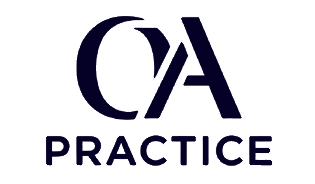D236 Pathophysiology - Set 3 - Part 1
Test your knowledge of technical writing concepts with these practice questions. Each question includes detailed explanations to help you understand the correct answers.
Question 1: A patient with chronic inflammation shows elevated C-reactive protein levels. What organ produces this acute phase protein that serves as an inflammation marker?
Question 2: What happens to DNA methylation patterns in cancer cells that contributes to abnormal gene expression and tumor development?
Question 3: A family pedigree shows disease affecting only males through multiple generations with carrier females. What inheritance pattern does this suggest?
Question 4: During complement cascade activation, what is formed that directly punctures bacterial cell membranes causing pathogen death?
Question 5: Which type of necrosis typically occurs in tuberculosis infections, creating a cheese-like appearance in affected tissues?
Question 6: A patient develops symptoms only when both copies of a gene are mutated. However, having one mutated copy provides resistance to malaria. What concept explains this?
Question 7: What cellular process becomes defective in cancer cells, allowing them to bypass normal lifespan limits and divide indefinitely?
Question 8: During bone development, which cells produce the cartilage template that will later be replaced by bone tissue?
Question 9: A diabetic patient develops numbness and tingling in their feet. What pathological process in blood vessels causes this neuropathy?
Question 10: Which immunoglobulin crosses the placenta to provide passive immunity to newborns during their first months of life?
Question 11: What distinguishes apoptosis from necrosis in terms of the cellular response and impact on surrounding tissues?
Question 12: A researcher discovers that certain genes are only expressed when inherited from the father. What genetic phenomenon explains this?
Question 13: Which hormone deficiency in children leads to decreased bone growth and short stature despite normal body proportions?
Question 14: During allergic reactions, what happens when allergens cross-link IgE antibodies on mast cell surfaces?
Question 15: What mechanism allows bacteria to share antibiotic resistance genes with other bacteria, spreading resistance rapidly?
Question 16: A patient with liver cirrhosis develops ascites. What pressure change drives fluid accumulation in the peritoneal cavity?
Question 17: Which cytokine primarily drives the fever response during infections by acting on the hypothalamic temperature regulation center?
Question 18: What cellular adaptation occurs when the heart muscle thickens in response to chronic hypertension?
Question 19: A pregnant woman's ultrasound shows polyhydramnios. This excess amniotic fluid often indicates which fetal problem?
Question 20: Which protein accumulates in neurons of Alzheimer disease patients, forming the characteristic neurofibrillary tangles?
Need Guaranteed Results?
Our exam support service guarantees you'll pass your OA on the first attempt. Pay only after you pass!
Get Exam Support